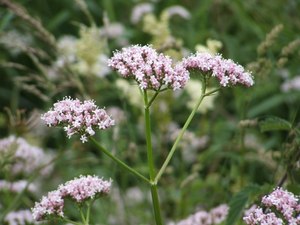Nothing can brighten your yard as well as a beautiful flower garden. The best flower gardens don’t just happen, they are planned. Following this step-by-step guide to planning a flower garden will help you simplify the process and make your garden a success.
Step 1: Select The Perfect Spot
When choosing the perfect place for your flower garden, you have to pay attention to certain details. The first thing to know is how many hours of direct sunlight that area gets. You’ll need to use shade plants if it gets less than 4 hours of sunlight and full-sun plants if it gets more than 6 hours of sunlight. If that area gets between 4 and 6 hours of sunlight, you will need to use partial-sun plants.
You also need to check out the soil conditions. You will want to avoid areas that are too rocky or tend to have standing water. Stay away from big trees because they can steal water and nutrients from your flowers. Steep hills can also be a challenge.
Step 2: Decide on The Size of Your Garden
Think about the time, effort, and money you want to invest in creating your garden. Small gardens are cheaper and easier to maintain, and you can always expend them in the future. Try starting with a garden around 30 square feet which will accommodate about 30 plants.
Step 3: Choose Your Color Scheme
Some people are very good at choosing colorful plants for their garden on their own, but some of us need help. Try a monochromatic, contrasting, or analogous color scheme in your garden. Monochromatic color schemes use different shades of the same color. Contrasting colors are colors found on the opposite side of the color wheel such as blue and orange, red and green, or yellow and purple. Analogous colors are found on the same side of the color wheel like blue, purple, and pink, or red, orange, and yellow.
Step 4: Decide When Your Garden Should Bloom
Some people like a garden that has one spectacular blooming season. If this is something you would like to try, decide if you want your garden to bloom in spring, early summer, mid-summer, or in late summer. Choose only those plants that bloom in the season that you chose.
Other people like to have a garden that blooms continuously from spring to fall. If you would like a continuously blooming garden, you will need to choose flowers that bloom in each of the growing seasons. Annuals are a good choice in these gardens because they usually provide constant blooms spring through fall. However, annuals need to be replanted every year. Try planting annuals with perennials to fill in an gaps between blooms.
Step 5: Don’t Forget Height
When choosing your flowers, make sure to check out the height that each plant will get to when full grown. You want to put taller plants in the back and shorter plants in the front.
If you are creating an island garden, or a garden in the center of your yard, put the larger plants in the center and the smaller plants on the border.
Step 6: Get to Work
Before you get started, make sure you have all the gardening supplies you will need. Nothing is worse than having to stop working and run to the hardware store in the middle of a project. You will need a shovel, hoe, and trowel. Make sure you have enough top soil if your looking to create a raised garden.
Be prepared to get dirty. You will need to dig up any grass, rocks, or weeds. Level out the soil. When you dig holes to plant your flowers, make sure the hole is a little bigger than the pot. Be careful when removing the plants from their pots, you don’t want to damage the roots. Water each plant before covering the roots with soil. Adding mulch will help keep the weeds down and hold in moisture.
Step 7: Maintenance
After you have created your flower garden, you still have to work at maintaining it. New plants will need watered at least every other day until their roots are established. Once the garden is established, you should only have to water it 2 or 3 times a week. Weeding your garden regularly will keep it looking neat and stop the weeds from choking out the flowers. You should weed your garden at least once a month. Removing spent flowers, or dead-heading, will increase blooms on many plants.




